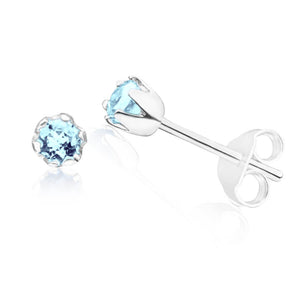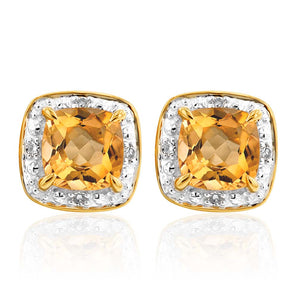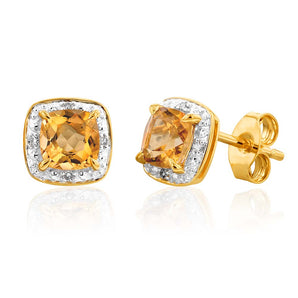November Birthstone
The two November birthstones are Citrine and Topaz. Citrine is a yellowish-brown tone, hence its citrus-inspired name, while the Topaz appears in all sorts of colours from an orange-yellow hue to a blue, pink, purple or even green.
Similar in appearance to one another, many people will often mistake a yellow topaz for a citrine stone. The yellow Topaz is sometimes mistakenly referred to as the citrine's wealthier cousin. However, despite their physical similarities, topaz and citrine stones come from completely different mineral families.
Read on as we unpack all there is to know about these exquisitely coloured November birthstones.
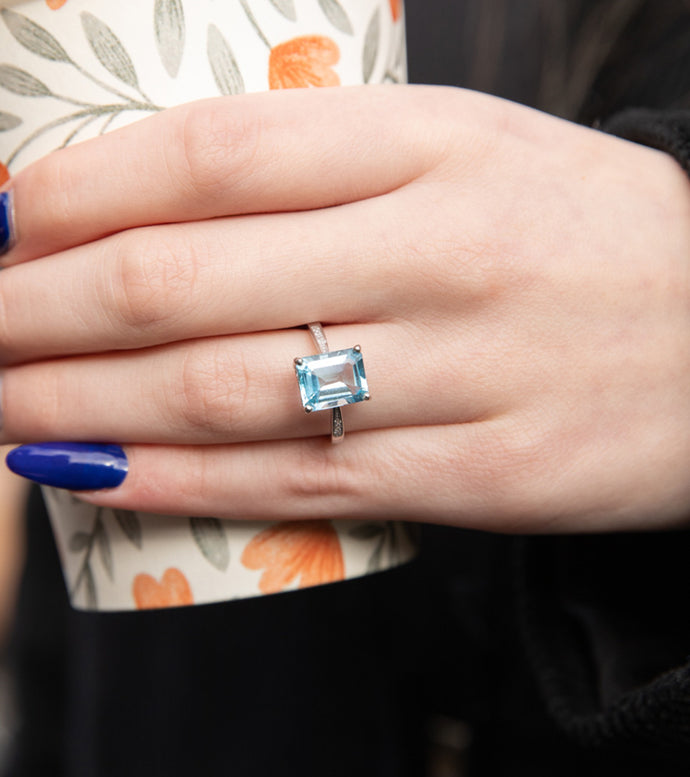
MEANING AND PHYSICAL COMPOUNDS OF TOPAZ
Commonly referred to as the rainbow gem thanks to its variation in colour, Topaz' exquisite tones have often led to it being mistaken for other popular gemstones including sapphire jewellery, peridot jewellery and ruby jewellery. Its vibrant appearance has also led it to become a popular addition in jewellery for centuries.
A silicate mineral composed of aluminium and fluorine, topaz stones are formed from cracks underneath the earth's surface. When a hot fluid (such as lava) runs through fluorine and is dragged into the cracks between rocks a topaz is formed. Ranking 8th on the Mohs Scale of Hardness, topaz stones are harder than quartz but not quite as tough as a ruby or a sapphire. Their durability makes topaz stones an ideal choice for jewellery as they won't be as prone to breakage as stones that rank lower on the hardness scale. Because of their rarity, many citrine stones on the market today are lightly coloured amethyst stones that have been treated with heat until they eventually gain an orangey hue that is commonly associated with the stone.
A symbol of love and fidelity, topaz jewellery is traditionally gifted between couples for their 4th and 19th wedding anniversary as it is said to help strengthen a couple's bond. In ancient times, many adorned topaz stones in necklaces and other jewellery as it was believed to provide immunity while also helping to treat obesity, anxiety, joint pain, muscle pain and diabetes. In Ancient Greece, some thought that if they wore the stone it might even help improve their fitness level. Some folk even believed the stone could prevent death.
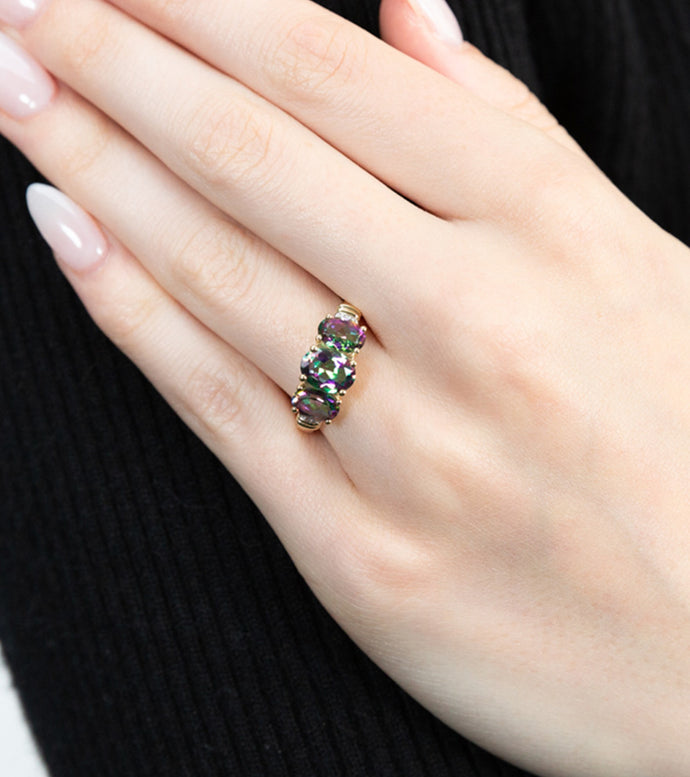
THE HISTORY OF TOPAZ
Topaz stones have a long and often disputed history, primarily because their similar appearance to other stones meant that they were often confused with those other stones. Named after Topazios, a small island in the Red Sea that is now known as Zabargad, Topaz stones have been treasured by civilisations for centuries.
In Ancient Egypt, the stone's often yellow hue led it to be referred to as the Gem of the Sun' by the Egyptians. The ancient Romans and Greeks kept the stone close by to prevent injuries while African Sharmans even used it in their ancient healing rituals. The ancient Hindu's also had faith in the topaz' abilities and kept them in their homes to prevent them from burning down in a fire.
In the mid-1700s a colourless topaz was discovered in Brazil. Initially believed to be a diamond due to its lack of colour, the stone weighed around 1,680 carats and was believed to be the biggest diamond' ever found on record at the time. Not surprisingly, it was quickly snapped up by the Portuguese royals who added it to a crown to serve as a reminder of the royal families' power and wealth. Not long after, the stone was exposed for not being a true diamond. However, the stone was too beautiful to be discarded which is why it remains on the Portuguese crown to this day.
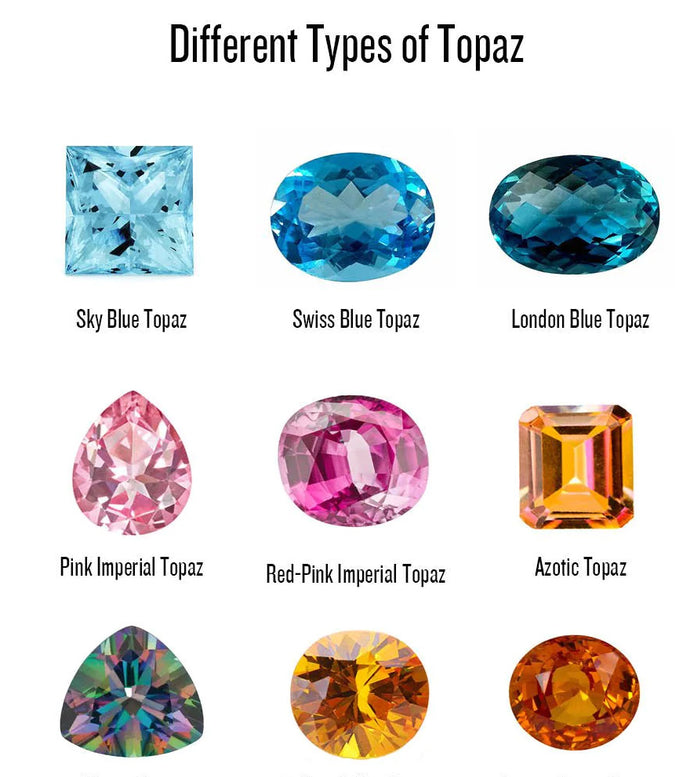
WHERE DO TOPAZ STONES COME FROM?
Topaz stones are found all over the globe, however, they are primarily mined in countries such as Myanmar, Mozambique, Mexico, Nigeria and Brazil. The largest exporter in the world is Brazil, where they are known for producing the largest and highest-quality Topaz stones. The largest Topaz ever found is the El-Dorado Topaz. Weighing in at a hefty 31,000 carats, the stone which was discovered in the mineral-rich Minas Gerais, Brazil in 1984 currently holds the record for the largest faceted gemstone in the world.
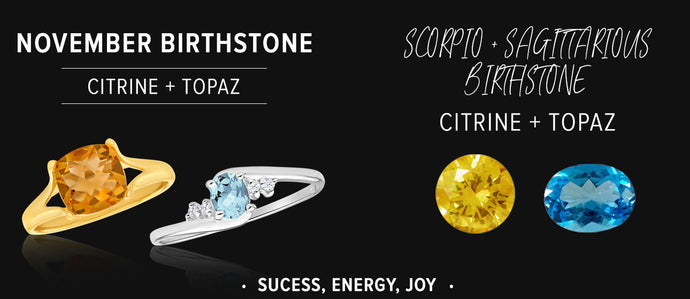
OUR FAVOURITE TOPAZ JEWELLERY
Shiels has an extraordinary range of diamond jewellery to tickle the fancy of any April baby. With pieces to suit every kind of style and lifestyle, you’ll find everything from diamond rings and diamond earrings to diamond bracelets and diamond pendants. Here are just a few of our favourites from Shiels’ April birthstone jewellery collection. We also have a diamond glossary and diamond buyers guide to give you a little bit of extra help!
SHOP TOPAZ
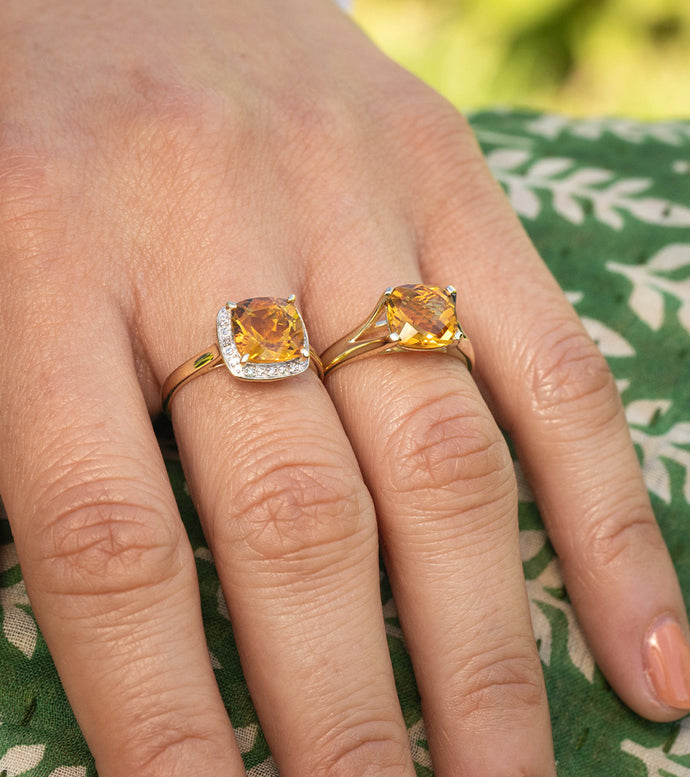
MEANING AND PHYSICAL COMPOUNDS OF CITRINE
A member of the quartz family, this golden stone is made up of silicon dioxide. It is formed deep within an ingenious rock (a particular type of rock) when silicon mixes in with liquid hot magma which eventually cools and becomes crystallized. Traces of iron within the elements are responsible for the stone's blood orange colour. The most commonly occurring mineral, quartz stones rank 7th on the Mohs Scale of Hardness, making citrine a reasonably durable gemstone.
Reminiscent of bright warm sun, citrine stones are thought to represent the vitality of life as well as a healthy mind and body. Some wear citrine jewellery as they believe that it will bring happiness and success. Referred to as the merchant stone in some cultures, the stone has often been revered for bringing wearer's luck-especially in business and trade. They believed that the stone's gold honey-like hue was symbolic of wealth, prosperity and success. Some small business owners will even leave a small citrine stone inside their cash drawer in hopes that it will bring good fortune.
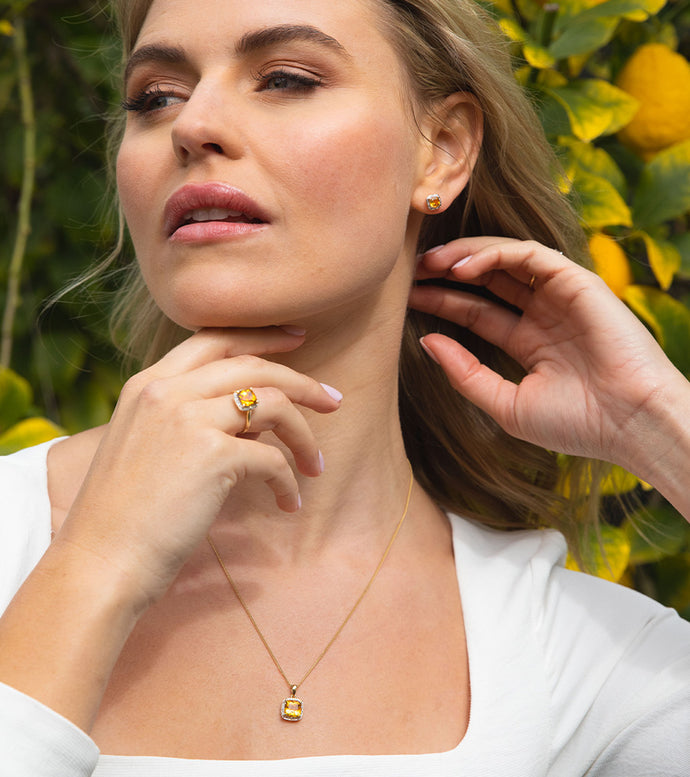
THE HISTORY OF CITRINE
Revered by civilisations for centuries, in ancient times people used to believe that citrine had magnificent healing properties which would help purify the body from toxins, improve blood circulation and strengthen the immune system. Some people even wore citrine stones as totems to protect against the venom from snake bites and diseases.
Others wore jewellery with the stone to mend their broken hearts and to alleviate depression. In Ancient Rome, Roman priests would fashion the bright yellow stones into large signet rings while in Ancient Egypt they would adorn them as talismans to help leverage their powers. They were also incredibly fond of the stones in Ancient Greece where they would carve images and symbols into them.
In the 1800s, Queen Victoria was known for her admiration of the gemstone and even used it to help decorate her and Prince Albert's summer residence outside of London. In the era between World War I and II where art deco was all the rage, many women sported elaborate jewellery such as citrine rings, citrine pendants and citrine earrings which were adorned with this wonderful November birthstone.
In Scotland, they even added citrine stones to their shoulder brooches and kilt pins. During this period it wasn't unheard of for people to pair citrine with other vibrantly coloured gemstones such as peridot, amethyst jewellery or blue topaz.
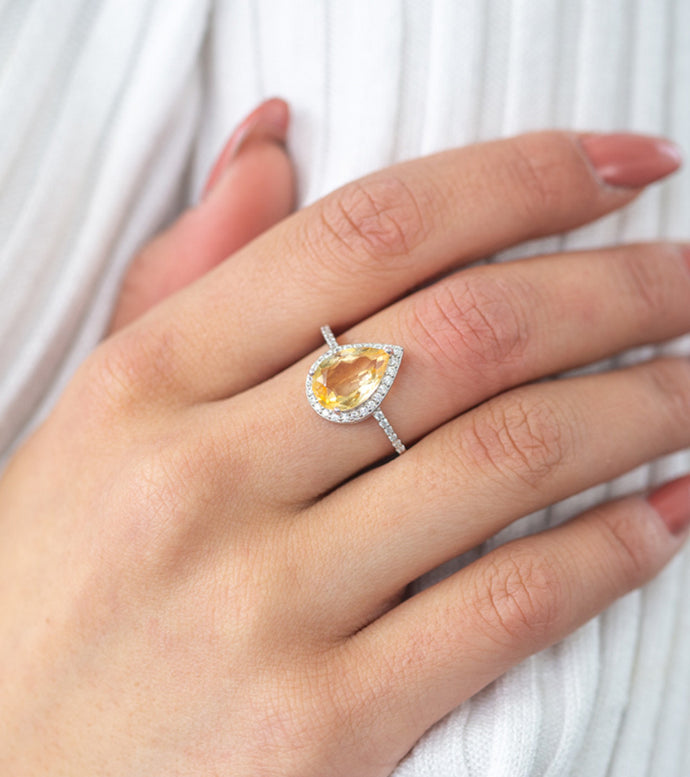
WHERE DO CITRINE STONES COME FROM?
It is extremely rare to find a natural citrine stone out in the wild, hence why the majority of the stones are made from treated amethyst stones found in eastern Brazil. Natural stones, when they are found, are typically mined in Brazil, Spain and Bolivia. The largest faceted citrine stone in the world is the Malaga' citrine.
Weighing over 20,020 carats, this mammoth stone was found in Mina Gerais, Brazil, in 1990. Due to the sheer size of the stone and the risk involved in cutting it, the Malaga remained in its original shape for 19 years before it was finally shaped in 2009. The whereabouts of the stone are currently unknown



